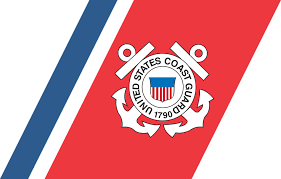- Traffic control lights are energized.
- Gretna Navigation lights 94 and 97 are extinguished.
- Vessels transiting Algiers Point are required to check-in with VTS LMR.
- Unless moored to a shore side facility or mooring buoys, all deep draft vessels must have three means to hold position. An example would be two fully operational anchors and the propulsion system. Should a vessel lose an anchor or suffer a propulsion casualty, and the vessel does not have redundant capabilities available, such as aft anchors or two main engines, then a third means of holding position could be via tug assist.
- All cargo transfers authorized in designated anchorages, as noted in 33 CFR 110.195, are required to submit a Notice of Midstream Transfer form for review 48-hours prior to commencing transfer operations within the Captain of the Port New Orleans (COTP) zone.
- Midstream cargo transfers may be conducted at the designated anchorages within the New Orleans COTP zone as defined by 33 CFR 1 10.195(a), with exception of the General Anchorage (MM 90.1 – 90.9 AHP) and the Quarantine Anchorage (MM 90.9 – 91 .6 AHP). This requirement does NOT affect:
- a. Vessel to vessel transfers which take place at a Coast Guard regulated facility.
- b. Bunkers or delivery of ships stores.
- c. Cargo operations which take place in a designated and established mid-stream buoy system.
- A Midstream Transfer Notice form is supplied with the attached MSIB.
- Anyone wishing to conduct vessel to vessel cargo transfers not specifically exempted as noted above, should contact the Sector New Orleans Facility Compliance Branch at (504) 365-2370 or by e-mail at Facilitiesnola@uscg.mil.
- Maximum vessel length for General Anchorage – 600 Feet.
- Heads down – Daylight Only.
- Stern first Chalmette Slip – Daylight Only.
- When the river reaches seven (7) feet at the Carrollton Gage, all head-down landings will be conducted during daylight hours only.
- Above LMR MM 220, vessels drafting 41’ or greater are restricted to daylight only.
- Vessels must get underway 3 hours prior to the official sunset time.
- Exceptions will be made for shifts from berths to/from the Middle Baton Rouge anchorage.
UNITED STATES COAST GUARD SECTOR NEW ORLEANS
MARINE SAFETY INFORMATION BULLETIN
Volume XVIII Issue: 067
CARROLLTON GAUGE AT 8 FEET AND RISING
When the Carrollton Gauge reads 8 feet and rising, the following operating requirements will be in effect:
1. In accordance with 33 CFR 161.65, the Governor Nicholls Harbor Traffic Control Light 94, the Gretna Harbor Traffic Control Light 97 and the Westwego Traffic Light 102 are energized.
2. The Harbor Traffic Control Lights are located at:
Governor Nicholls Light, MM 94.3, AHP, LDB, LMR (LLNR 13855/34770),
Gretna Light, MM 96.6, AHP, RDB, LMR (LLNR 13880/34795), and
Westwego Traffic Light, MM 101.4, AHP, RDB, LMR (LLNR13950).
3. The Governor Nicholls Navigation Light 94 and the Gretna Navigation Light 97 are extinguished while the Traffic Control Lights are operating.
4. Downbound vessels: Check in with Vessel Traffic Service Lower Mississippi River (call sign “New Orleans Traffic”) no lower than Huey P Long Bridge, MM 106.1, AHP (SHIPS and TOWS), and the Marlex Terminal, MM 99.0, AHP (SHIPS and TOWS).
5. Upbound vessels: Check in with “New Orleans Traffic” no higher than the Algiers Canal Forebay, MM 88.0, AHP (SHIPS), Industrial Canal, MM 92.7, AHP (SHIPS and TOWS), and Crescent Towing Smith Fleet, MM 93.5, AHP (TOWS).
6. In accordance with 33 CFR 160.111 (c), the COTP has determined that during periods of high water, unless moored to a shore side facility or mooring buoys, all deep draft vessels must have three means to hold position. An example would be two fully operational anchors and the propulsion system. Should a vessel lose an anchor or suffer a propulsion casualty, and the vessel does not have redundant capabilities available, such as aft anchors or two main engines, then a third means of holding position could be via tug assist.
7. All cargo transfers authorized in designated anchorages, as noted in 33 CFR 110.195, are required to submit a Notice of Midstream Transfer form for review 48-hours prior to commencing transfer operations within the Captain of the Port New Orleans (COTP) zone.
Midstream cargo transfers may be conducted at the designated anchorages within the New Orleans COTP zone as defined by 33 CFR 110.195(a), with exception of the General Anchorage (MM 90.1 – 90.9 AHP) and the Quarantine Anchorage (MM 90.9 – 91.6 AHP). This requirement does NOT affect:
a. Vessel to vessel transfers which take place at a Coast Guard regulated facility.
b. Bunkers or delivery of ships stores.
c. Cargo operations which take place in a designated and established mid-stream buoy system.
Anyone wishing to conduct vessel to vessel cargo transfers not specifically exempted as noted above, should contact the Sector New Orleans Facility Compliance Branch at (504) 365-2370 or by e-mail at Facilitiesnola@uscg.mil. A Midstream Transfer Notice form is supplied with this MSIB, identified as MSIB XVIII Issue 067a.
For additional information, contact the following:
Coast Guard Vessel Traffic Service Lower Mississippi River (24 hours): (504) 365-2230, VHF-FM Ch. 05A, 12
Coast Guard Sector New Orleans Command Center (24 hours): (504) 365-2543
Coast Guard Sector New Orleans Waterways Management: (504) 365-2280


